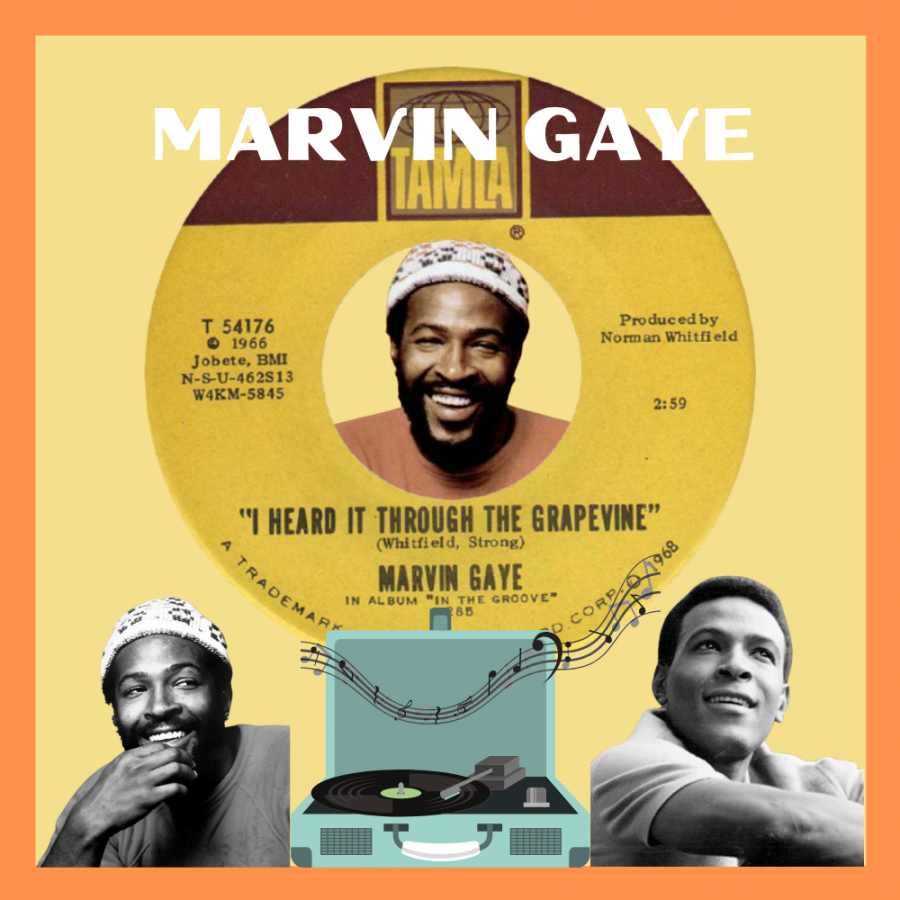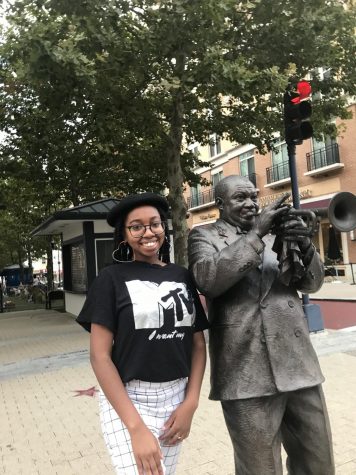If called upon, an overwhelming majority of Americans would likely recognize their country’s national anthem.
Not really by choice as the sluggish and stagnant tune of “The Star-Spangled Banner” is programmed into our brains through class assemblies and professional sports games before we even realize what its words represent.
Plus, in the immortal words of Vince Staples, it doesn’t even slap.
In spite of this, there have been more than a few iconic renditions of this ballad. Whitney Houston unsurprisingly belted a powerful version at Super Bowl XXV in 1991. Luther Vandross, Jennifer Hudson and even Fergie (though she’s more known for messing it up) have tackled the nation’s musical symbol.
However, the night when Francis Scott Key’s song truly proved its merit was at the 1983 NBA All-Star Game. At the center of L.A.’s Fabulous Forum, the astonished faces of the crowd and the arena’s beaming white rays mirrored off of Marvin Gaye’s Aviator sunglasses.
With his entrance, the game turned into a can’t-miss concert broadcast across the country. The crowd grooved with the thumping beat of his drum machine and absolutely lost their marbles, ensuring that everything following the song would play out much less impressive.
This would be one of three magical nationally televised performances for Gaye in 1983 as he also made a wonderful final appearance on Soul Train and dazzled all the legends in his presence at the Motown 25 anniversary special. After releasing his final studio album “Midnight Love” the year prior, these performances captured the essence of what first made him a fan favorite when his career began.
Throughout his career, Gaye released 25 studio albums, with much of his legacy defined by an illustrious run of albums from the 1970s. He lived life in the vein of Dr. Jekyll and Mr. Hyde. There was the pleasant and passionate Marvin Gaye, whose blissful public persona and legendary concoctions made him one of America’s treasured icons. There was also the haunted and hollow Marvin Gaye, a broken man drowning in his relationships with love, drugs and tragedy and restricted by a manic-depressive personal life that constantly ensured he was a ticking time bomb.
Gaye’s lifelong struggles ended when he was shot twice and killed on April 1, 1984, by his father Marvin Gay Sr., after a fight turned deadly. Gaye and his father never saw eye to eye, and Gaye’s family believes his actions may have acted as a form of premeditated suicide. As Gaye’s brother Frankie held him, Frankie claimed his final words were “I got what I wanted… I couldn’t do it myself, so I had him do it… it’s good, I ran my race, there’s no more left in me.” The next day would’ve been Gaye’s 45th birthday.
“WHAT’S GOING ON”
Every great musician has their magnum opus, something that can be looked back upon years later as their best work. For Gaye, that album is “What’s Going On.” He was already a massive star on Motown known for his tender vocals and lovely duets, but this made him a legend.
Before this album was recorded, Gaye was in a state of disarray. He wanted to try out for a spot on the Detroit Lions roster and was summarily rejected due to the financial risk it posed to the team. Gaye had fears about going on tour, further onset by the death of Tammi Terrell. Three years earlier, Terrell had collapsed into his arms during a duet performance due to an unknown brain tumor and she had just recently passed after several unsuccessful surgeries. There was a persistent cocaine addiction, IRS problems, marriage troubles and he tried to kill himself before being talked out of it by Berry Gordy’s father. But during this time, inspiration came from outside his life.
The United States was the epicenter of various intersecting social movements in the late 1960s (anti-war, civil rights, second-wave feminism, counterculture, etc). Gaye’s brother Frankie returned from Vietnam as a shattered war vet and Gaye’s friend and Four Tops singer Renaldo Benson experienced an act of police brutality firsthand, something which candidly inspired the song “What’s Going On.”
Released fifty years ago, the album is Gaye’s reaction to society in the midst of multiple crises, each afflicting the core of the country. It is a concept album constructed as a song cycle, as all the songs bleed into each other and craft a continuous sound. It’s powerful, political, provocative and captured the exact sentiment he was trying to conjure with words.
Prior to this record and Stevie Wonder’s “Where I’m Coming From,” Motown often tried to steer away from political protest songs. Label head Berry Gordy was adamantly against releasing the title track as a single, but after Gaye went on strike, Gordy finally relented. It has since been regarded as one of the defining socially-conscious R&B albums of the generation along with Sly and the Family Stone’s “There’s a Riot Goin’ On,” Curtis Mayfield’s “Superfly” and Stevie Wonder’s “Innervisions.” “What’s Going On” was even ranked number one on Rolling Stone’s updated 500 Greatest Albums of All-Time list in 2020.
“What’s Going On”
Gaye began his most prophetic project with a unity song. He preaches that love is the answer and that too many people are dying while also recalling what he sees on television: picket lines and picket signs. There is uncertainty in the air, but it is comforting to know that answers will be found.
“What’s Happening Brother”
Gaye is struggling to reintegrate after returning to a changed world, as seen through the eyes of a Vietnam veteran. He can’t find work or enjoy his hobbies and he’s wondering why people are fighting at home. Gaye shares a detached perspective that many people shared after being ripped from society for so long by viewing life through the lens of struggle and hopelessness.
“Flyin’ High (In the Sky)”
Gaye is battling his nagging temptation to use heroin since it’s his one true outlet of escaping pain. The instrumentation is upbeat and dreamy but it’s only hiding his turmoil. This song would serve as the perfect musical score to his life, something that sounds sugary and joyful but is far more disheartening than anyone could ever hope to understand.
“Save the Children”
“Save the Children” casts a terrible prediction for the descendants of baby boomers. With the world on a downward path, Gaye says the children of the world are destined for lives of sorrow and tragedy. He’s encouraging people to live not only for their children but every child and to put their interests at heart.
If only people had listened to the message.
“God is Love”
By far the shortest song on the project and the most straightforward, “God Is Love” encourages people to follow God’s words of love. By following God, Gaye says our sins will be forgiven and a wave of everlasting peace will be achieved. He’s basically pleading with listeners that it’s not too late to turn back no matter the mistakes they’ve made.
“Mercy Mercy Me (The Ecology)”
In 1971, the effects of overpopulation, land degradation and pollution began to manifest themselves, but explaining to Americans why they should care about climate change was a lot like teaching a giraffe to be short.
Relatively impossible.
In response, Gaye made one of the era’s rare environmentally conscious songs and declared humans to be at fault. Since then, things have only exacerbated, and we’re glad Gaye isn’t present to witness the destruction.
“Right On”
On the album’s longest song, Gaye tries appealing to all groups of people by resonating with their causes. Gaye has spent his adult life mostly shielded from critical social issues due to his wealthy social status, but he still tries to connect with the common man. His resonating strategy for accomplishing this is to preach peace and love to all who are willing to listen.
“Wholy Holy”
Tying in with his praise of love and spirituality, “Wholy Holy” is Gaye’s most descriptive support of Christianity and Bible doctrine. It becomes clear that his divine wish is for salvation as he summons the lasting power of belief. Belief in Jesus, belief in ourselves and belief in each other. To Gaye, all of these principles can change the existing condition and “rock the world’s foundation.”
“Inner City Blues (Make Me Wanna Holler)”
“Inner City Blues” is a damning indictment of the way of the world. Gaye is infuriated with society’s morality and treatment of poor Black families. Being relegated to ghettos means constant harassment by police, and poverty is a breeding ground for tax issues. Even when taxes are paid, their money is being spent on expensive space expeditions and government gambles over helpful social programs. How are their lives supposed to be made better by strangers landing on the moon when they can’t come up with rent money or buy enough groceries? This sense of confusion and helplessness circles back to the jazzy tune of the project’s introduction with more questions about the world than ever before.
LEGACY AND GENIUS
Despite his reservations, Gaye was an electrifying performer whose style and influence hasn’t really left the music scene at all.
In addition to battling all the demons he faced during his life, Gaye was involved in problematic and combative marriages, one namely being to Berry Gordy’s sister, Anna Gordy, who was a head executive of Motown. His 1978 album, “Here, My Dear” was inspired by her and basically a huge “screw you” to her yet still sensibly sentimental.
Even still, over the course of his brief life, Gaye released over 20 studio albums, four live albums, a rhythmic soundtrack for the 1972 film, Trouble Man, 20 compilations and 83 singles including Here My Dear”, “Let’s Get It On”, “Sexual Healing”, “Heard it Through the Grapevine” and “Ain’t No Mountain High Enough,” “You’re All I Need to Get By”, “Ain’t Nothing Like The Real Thing” and “Your Precious Love”.
His body of work represented everything from love and lust to social injustice, and his iconic voice helped to define not only the sound of Motown Records but the sound of Detroit as well as many soundtracks to people’s lives across generations. His soulful and sensitive style, combined with an enormous amount of vulnerability, is distinct and can even be likened to the power of gospel music in terms of what a choir’s impact can have on a track. All of this can be easily found in modern music, ranging from neo-soul singers to rappers.
To put it plainly, Gaye helped to redefine the sound we know, love and recognize today as American soul. With the way he pushed his music to capture political ideas and actively protest in the way he knew best — through his incredible musicianship — Gaye reinvented what social boundaries could like for a singer and truly introduced the vastness of what great music could be.
Revolutionary is an understatement for what Gaye was able to accomplish in his lifetime. It’s undeniable and it’s highly unlikely his impact in music will ever fade away.











